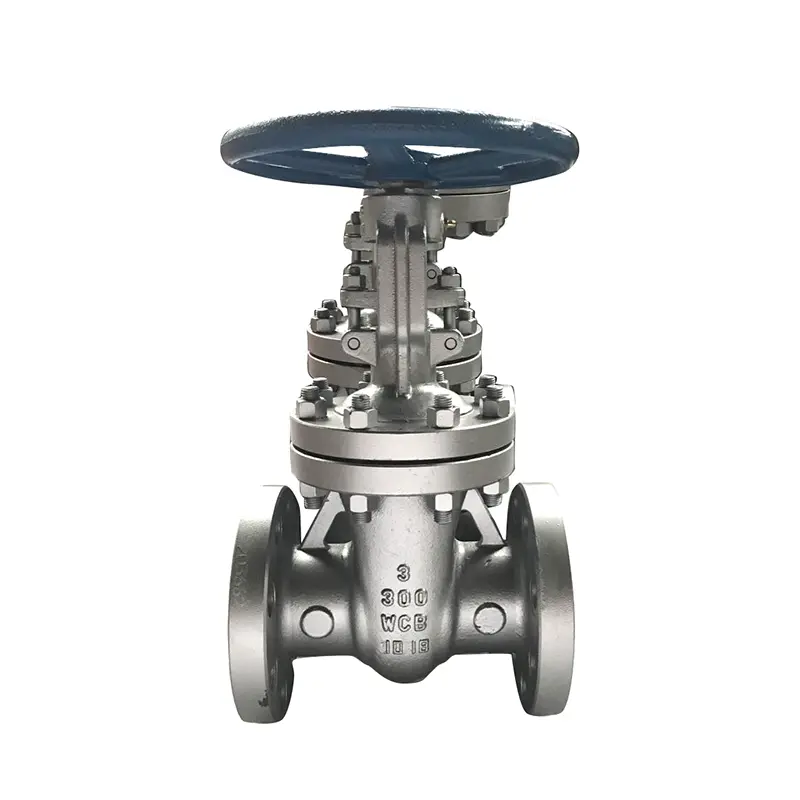The Role of Cast Carbon Steel Gate Valves in Industrial Flow Control
2024-12-16
Flow control is a critical aspect of industrial operations, ensuring the safe and efficient transport of liquids and gases. Among the many valve types available, cast carbon steel gate valves have earned a reputation for their reliability and robust performance. In this blog, we’ll explore how these valves function, their advantages, and their significance in various industrial sectors.
How Do Cast Carbon Steel Gate Valves Work?
Gate valves operate by raising or lowering a gate to control the flow through a pipeline. The design allows for full closure (no flow) or full opening (unrestricted flow), with minimal pressure drop when open. Cast carbon steel gate valves are specifically designed to handle high-pressure and high-temperature applications, making them ideal for demanding industrial environments.
Benefits of Cast Carbon Steel Gate Valves
1. Exceptional Strength:
- Cast carbon steel’s high tensile strength makes these valves resistant to deformation under pressure.
2. Longevity:
- Durable construction ensures extended service life, even in harsh conditions.
3. Versatile Performance:
- Effective for a wide range of media, including water, steam, oil, and chemicals.
4. Minimal Maintenance:
- With proper installation and care, these valves require minimal upkeep, reducing downtime and costs.
5. Scalability:
- Available in various sizes and pressure ratings to suit different pipeline requirements.
Key Design Features
1. Wedge Type:
- Flexible wedges accommodate slight misalignments, ensuring a tight seal.
- Solid wedges provide durability for high-pressure applications.
2. Bonnet Types:
- Bolted bonnets offer ease of maintenance and repair.
- Pressure-seal bonnets ensure a leak-proof seal in high-pressure systems.
3. End Connections:
- Flanged ends for secure, leak-free connections.
- Threaded or welded ends for specific installation needs.
4. Coatings and Linings:
- Epoxy or other coatings enhance corrosion resistance for extended life.
Industry Applications
1. Oil and Gas:
- Critical for pipeline systems, refineries, and storage facilities.
2. Water Distribution:
- Ensure efficient flow control in municipal and industrial water networks.
3. Power Plants:
- Manage steam and cooling water in high-temperature environments.
4. Mining and Minerals:
- Control slurry and abrasive fluids in extraction and processing operations.
5. Marine and Offshore:
- Handle seawater and other fluids in challenging marine environments.
Selection Tips for Cast Carbon Steel Gate Valves
When choosing a cast carbon steel gate valve, consider:
1. Pressure and Temperature Ratings: Ensure the valve meets the operating conditions of your system.
2. Valve Size: Select the appropriate size to handle the required flow rate without causing excessive pressure drop.
3. Media Compatibility: Verify that the valve’s materials and coatings are suitable for the fluid being transported.
4. Compliance: Look for valves that meet industry standards, such as ASME, API, or ISO.
Best Practices for Operation and Maintenance
1. Open Fully: Avoid operating gate valves in a partially open position to prevent wear on the gate and seat.
2. Avoid Over-Tightening: Apply only the necessary force to close the valve securely.
3. Inspect Periodically: Regular checks for corrosion, wear, and leaks can prevent unexpected failures.
4. Train Personnel: Ensure that operators understand proper handling and maintenance procedures.
Cast carbon steel gate valves are a reliable solution for industrial flow control, offering unmatched durability and performance. Their ability to handle high-pressure and high-temperature applications makes them indispensable across industries such as oil and gas, power generation, and water treatment. By selecting the right valve and following best practices, you can enhance system efficiency, reduce operational risks, and achieve long-term reliability.



